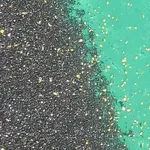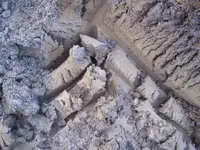racingjoe66
Greenie
Okay Guys and Gals, I had 2 samples of material tested and came back with the following results:
Sample 1----gold 0.142 oz per ton
------------silver 0.275 oz per ton
------------platinum 0.021 oz per ton
------------palladium 0.014 oz per ton
------------osmium 0.028 oz per ton
------------ruthenium 0.020 oz per ton
------------iridium 0.007 oz per ton
------------rhodium 0.004 oz per ton
Sample 2----gold 0.133 oz per ton
------------silver 0.199 oz per ton
------------platinum 0.017 oz per ton
------------palladium 0.016 oz per ton
------------osmium 0.023 oz per ton
------------ruthenium 0.021 oz per ton
------------iridium 0.007 oz per ton
------------rhodium 0.005 oz per ton
I am new to all this and wondering if the gold / silver is even worth mining with these results? I assume the other material results are so minor they aren't worth going after? The material sent off to be tested was a mixture of sandy gravel that is sitting on top of a blue clay layer and mixed in with these 2 samples was some of the blue clay that was right there at the sandy gravel layer. Would it be worth it to go deeper into the clay to have it tested further for gold and silver only? Going lets say 6 inches deep and then again at like 24 inches deep into the clay or what do people suggest?
Thanks for any and all input!!!
Sample 1----gold 0.142 oz per ton
------------silver 0.275 oz per ton
------------platinum 0.021 oz per ton
------------palladium 0.014 oz per ton
------------osmium 0.028 oz per ton
------------ruthenium 0.020 oz per ton
------------iridium 0.007 oz per ton
------------rhodium 0.004 oz per ton
Sample 2----gold 0.133 oz per ton
------------silver 0.199 oz per ton
------------platinum 0.017 oz per ton
------------palladium 0.016 oz per ton
------------osmium 0.023 oz per ton
------------ruthenium 0.021 oz per ton
------------iridium 0.007 oz per ton
------------rhodium 0.005 oz per ton
I am new to all this and wondering if the gold / silver is even worth mining with these results? I assume the other material results are so minor they aren't worth going after? The material sent off to be tested was a mixture of sandy gravel that is sitting on top of a blue clay layer and mixed in with these 2 samples was some of the blue clay that was right there at the sandy gravel layer. Would it be worth it to go deeper into the clay to have it tested further for gold and silver only? Going lets say 6 inches deep and then again at like 24 inches deep into the clay or what do people suggest?
Thanks for any and all input!!!
Amazon Forum Fav 👍
Upvote
4





 I have no experience close to what you have with gold and truelly appreciate your help! As for how the gold acts I'm the pan vs pyrite or mica and such. Yes some pieces I have are mica for sure as they break when I touch them with the pin and when in the shade look like brass or darker. But the gold pieces I'm sure are gold stay skinny no matter if in the shade or light is on them. And when water moves over them in the pan they don't move from there spot, they like stick. But then some of them that I'm sure are gold (flour gold) seem to float a little or move around some but stick with the black sand like crazy. Our pan in the picture we didn't fully clean out of the blonde sand, sorry about that. It got dark and we stopped for the night.
I have no experience close to what you have with gold and truelly appreciate your help! As for how the gold acts I'm the pan vs pyrite or mica and such. Yes some pieces I have are mica for sure as they break when I touch them with the pin and when in the shade look like brass or darker. But the gold pieces I'm sure are gold stay skinny no matter if in the shade or light is on them. And when water moves over them in the pan they don't move from there spot, they like stick. But then some of them that I'm sure are gold (flour gold) seem to float a little or move around some but stick with the black sand like crazy. Our pan in the picture we didn't fully clean out of the blonde sand, sorry about that. It got dark and we stopped for the night. 

